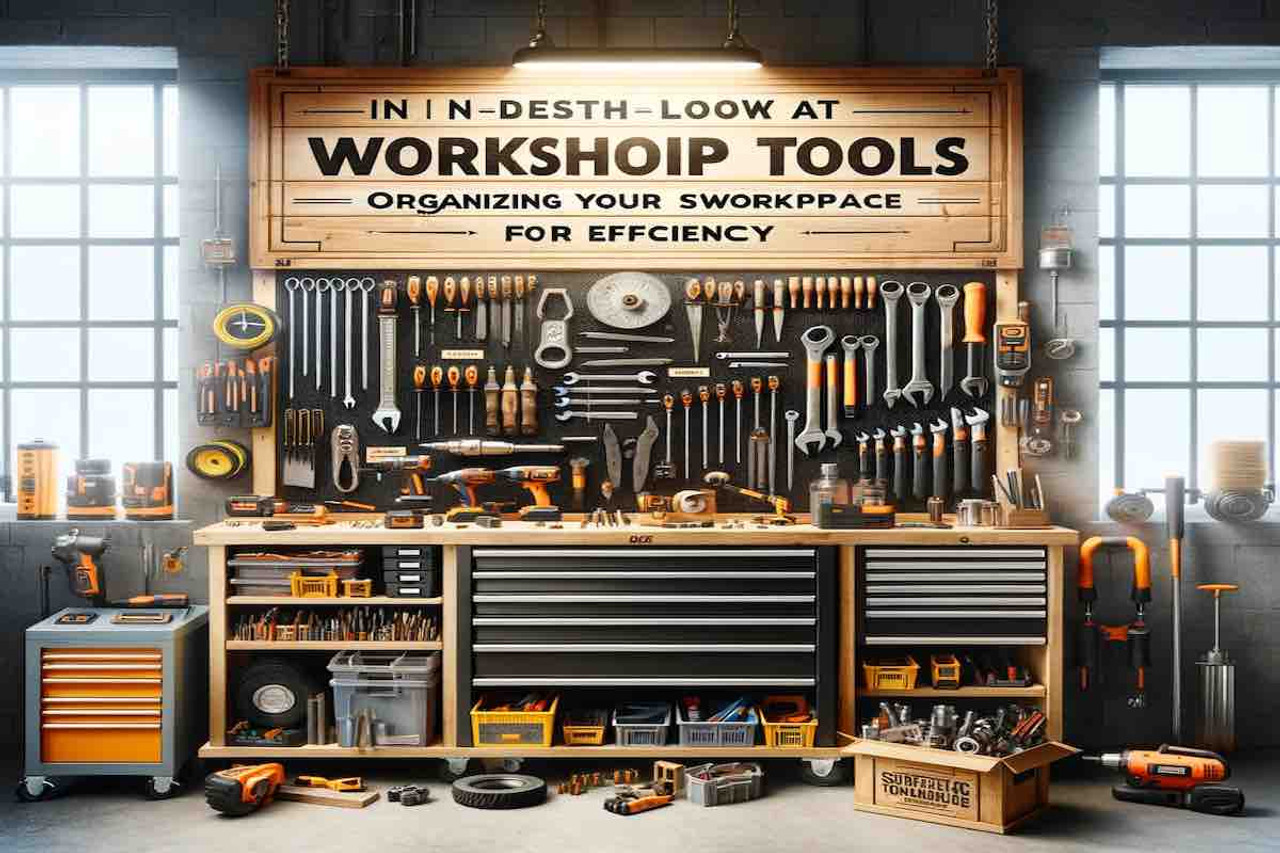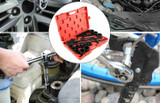Mastering Tool Longevity: The Complete Workshop Tool Maintenance Guide
The Complete Workshop Tool Maintenance Guide
Welcome to Tend Industrial Supplies LLC, where we understand the importance of maintaining your workshop tools. As any skilled craftsman knows, the secret to flawless work lies in your skills and the condition of your tools. In this comprehensive guide, we'll walk you through the essentials of workshop tool maintenance, ensuring that your tools stay in top shape, ready to deliver precision and efficiency with every use.
Proper maintenance of workshop tools isn't just about prolonging their life; it's also about safety and performance. Neglected tools can become hazards, while well-cared-for tools make every job smoother and more enjoyable. Whether you're a professional artisan or a DIY enthusiast, this guide will provide invaluable insights to keep your tools functioning like new.
Understanding Your Tools
Before diving into the maintenance procedures, it's crucial to understand the different types of tools in your workshop and their specific needs. Broadly, workshop tools can be categorized into hand, power, cutting, and measuring tools. Each category requires a unique approach to maintenance.
- Hand Tools: Your hammers, screwdrivers, wrenches, and pliers. Despite their simplicity, they demand regular cleaning and proper storage to prevent rust and wear.
- Power Tools: Power drills, saws, and sanders, among others, need more detailed care. Regular checks for electrical safety, vents cleaning, and lubricating moving parts are essential.
- Cutting Tools: Tools like chisels, knives, and saw blades require frequent sharpening and protection against corrosion. Precision in their maintenance directly affects their performance.
- Measuring Tools: The accuracy of tools like rulers, calipers, and levels is pivotal. It is crucial to keep them free from dust and storing them properly for precise measurements.
Cleaning: The First Step in Maintenance
The foundation of tool maintenance is regular cleaning. Dust, debris, and moisture are the primary enemies of most tools, and their accumulation can lead to rust, corrosion, and mechanical failure.
- Hand Tools: Start by wiping off any dirt or grease with a clean cloth. Use a mild detergent and water for tougher grime, but ensure the tools are completely dry before storing them.
- Power Tools: Unplug the tool first. Use compressed air to blow out dust from vents and moving parts. Wipe the exterior with a damp cloth, and ensure the tool is dry before its next use.
- Cutting Tools: After each use, clean off sap, resin, or any material residues. A light oiling after cleaning helps protect the blade from rust.
Regular Inspection: The Key to Preventive Maintenance
Beyond cleaning, regular inspections play a pivotal role in tool maintenance. It's about catching issues before they become significant problems.
- Hand Tools: Inspect for any signs of wear or damage. Ensure that handles are secure and free of splinters or cracks. Tools like hammers or axes should be checked for head security.
- Power Tools: Regularly inspect cords for fraying or damage and ensure that batteries function optimally. Check moving parts for wear and tear, and replace any parts showing deterioration.
- Cutting Tools: Look for signs of dullness or damage on the cutting edge. A dull tool works poorly and can be dangerous, requiring more force and potentially causing accidents.
- Measuring Tools: Accuracy is their hallmark. Check for any damage or wear that could affect their precision. Calibration should be done periodically to ensure reliability.
Lubrication: Ensuring Smooth Operation
Lubrication is essential, especially for tools with moving parts. It reduces friction, prevents rust, and prolongs the life of your tools.
- Hand Tools: Hinges, joints, and moving parts should be regularly lubricated with appropriate oil or lubricant.
- Power Tools: Follow the manufacturer's guide for lubricating moving parts. Use only the recommended lubricants to avoid damage.
- Cutting Tools: A light oil coating after each use can protect against rust, especially for tools made of high-carbon steel.
Storage: A Critical Aspect of Tool Care
Proper storage and organizing of workshop tools can significantly impact their longevity, efficiency of the workspace, and safety.
- Hand Tools: Store in a dry, organized manner. Toolboxes or pegboards can prevent damage from moisture and accidental drops.
- Power Tools: Keep them in their original cases or dedicated storage spaces. Ensure they are disconnected from power sources and batteries are removed if not in use for extended periods.
- Cutting Tools: Store in a dry environment. Protective sheaths or cases are recommended to protect the edges and prevent accidents.
Safety Tips: Maintenance with Care
Maintaining your tools is not just about the tools themselves; it's also about your safety.
- Always disconnect power tools from their power source before performing any maintenance.
- Wear appropriate safety gear, like gloves and eyewear, when cleaning or performing maintenance tasks.
- Ensure your workspace is well-lit and properly ventilated, especially when using lubricants or cleaners.
- Never bypass the safety features of tools during maintenance or use.
DIY Maintenance Tips: Empowering Yourself
Empowering yourself with DIY maintenance skills saves money and deepens your understanding of your tools.
- Sharpening Your Tools: Learn the art of sharpening cutting tools. Simple sharpening stones or files can be used for basic sharpening needs.
- Creating a DIY Cleaning Solution: Mix mild detergent with water for a cost-effective and efficient cleaning solution for most tools.
- Homemade Rust Remover: Lemon juice and baking soda can effectively remove small rust spots on your tools.
When to Seek Professional Help
Some maintenance tasks require a professional's touch, especially when it involves complex machinery or precision tools.
- Power Tool Repairs: If a power tool is malfunctioning, especially electrically, it’s safer and more efficient to have it checked by a professional.
- Specialized Sharpening: Professional sharpening ensures the best results without damaging the tool for precision tools or specialized equipment.
Maintenance Schedule Template: Stay on Track
Maintaining a regular maintenance schedule is vital. We have created a simple yet effective maintenance schedule template you can download from our website. This template will help you keep track of your tool maintenance activities, ensuring no tool is neglected.
Read also
Workshop Tool Maintenance: Keeping Your Hand Tools in Top condition.
Conclusion
Remember, well-maintained tools are safer, perform better, and last longer. At Tend Industrial Supplies LLC, taking care of your tools is taking care of your craft. Whether you're a seasoned professional or just starting out, these maintenance practices will ensure that your workshop remains a place of productivity and safety.
Call to Action
For more tips, guides, and quality supplies for your workshop, visit us atTend Industrial Supplies LLC. Got a specific question or need expert advice? Don't hesitate to reach out to us at sales@tendsupplies.com. We're here to help you make the most of your tools and your talent. Share your own maintenance tips or questions in the comments below, or connect with us on social media. We'd love to hear how you keep your tools in top condition!






